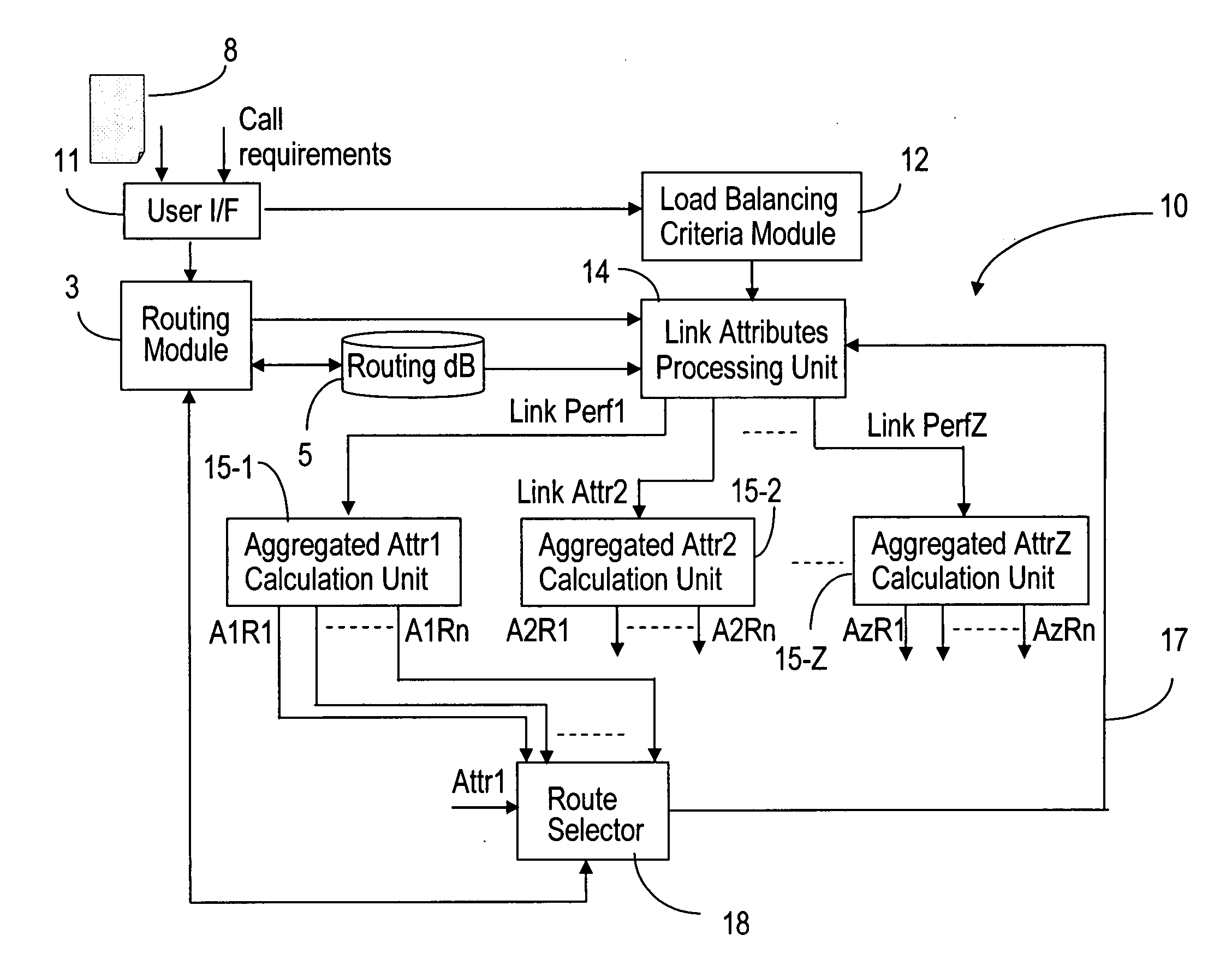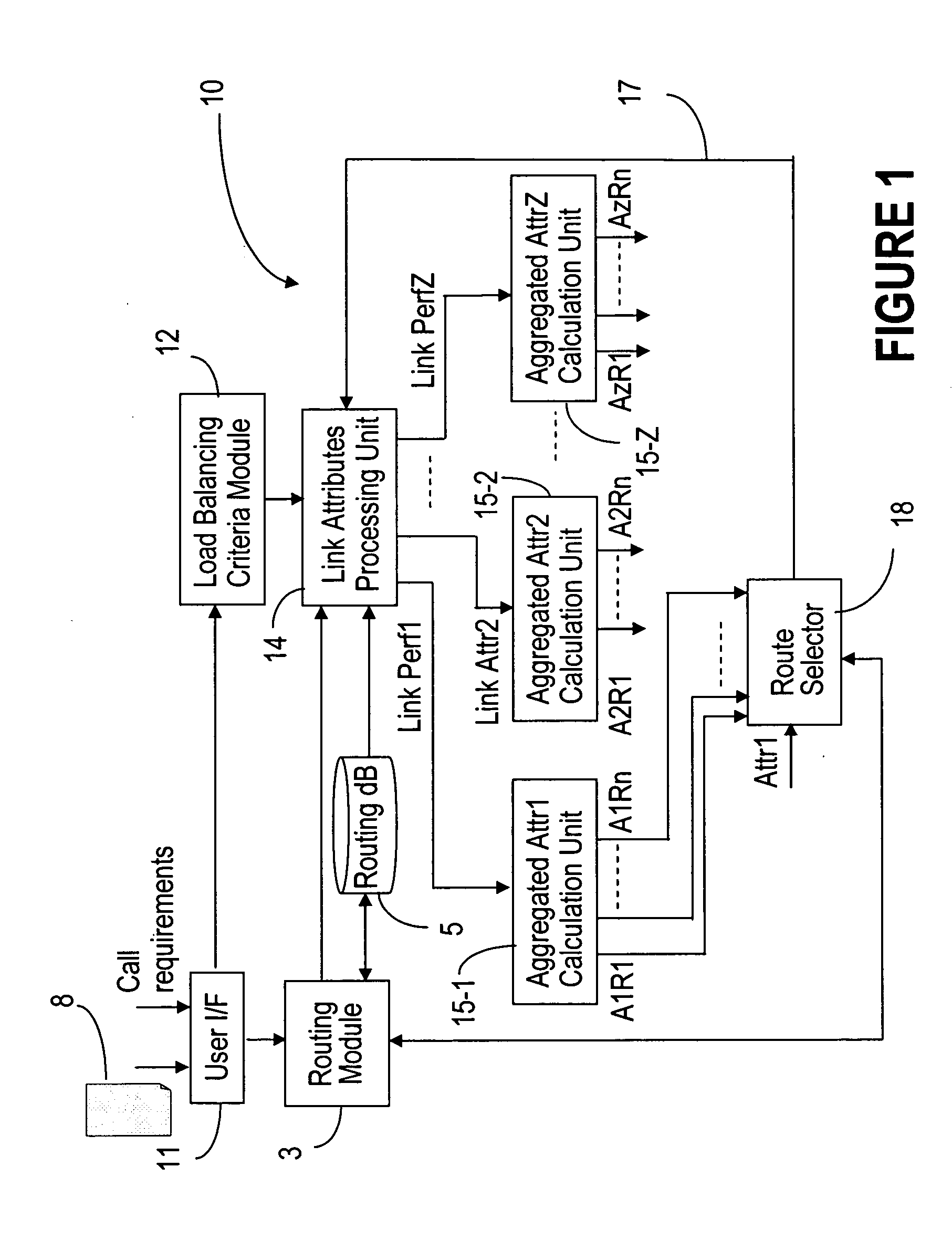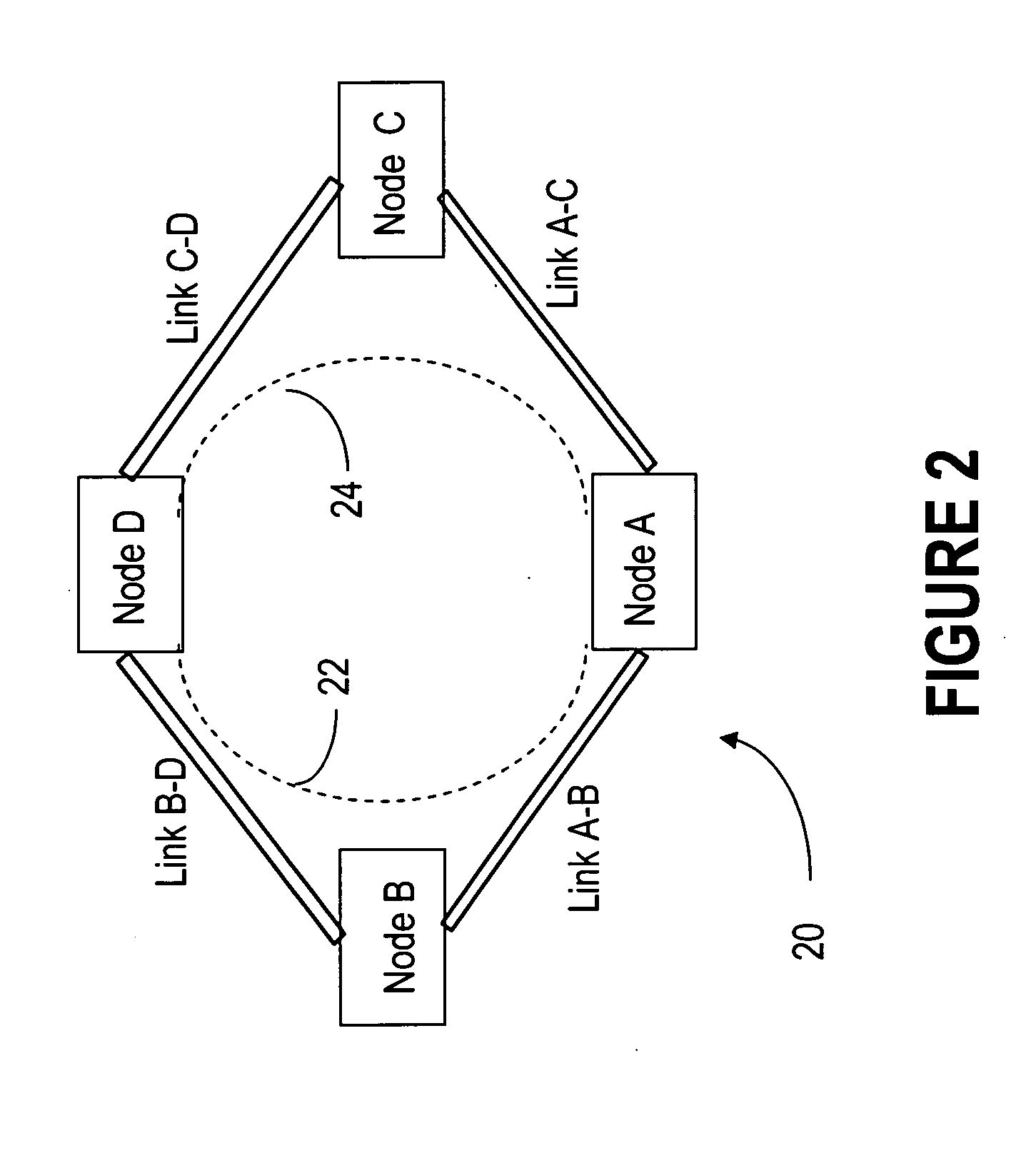Multiple criteria based load balancing
a load balancing and multiple criteria technology, applied in data switching networks, frequency-division multiplexes, instruments, etc., can solve problems such as user involvement, general undesirable solutions, and network performance degradation, and achieve better failure response, reduce service outage effects, and reduce costs for users
- Summary
- Abstract
- Description
- Claims
- Application Information
AI Technical Summary
Benefits of technology
Problems solved by technology
Method used
Image
Examples
Embodiment Construction
[0021] The invention described herein is best suitable for load balancing in PVC switched digital networks (such as an ATM network) and is preferably implemented in the networks equipped with a network management system (NMS). A PCV is a connection defined at subscription time and provisioned by the NMS. The invention might also be implemented at a switch level for soft permanent virtual connections (SPVC). A SPVC is a signaled PVC, which is set up on demand via a signaling protocol, and automatically re-established after a system restart.
[0022] The method and system described here use an aggregated load balancing approach based on various sets of criteria. Call routing or / and re-routing may be performed on a per-call basis as well as at the network level (applied to all calls in that network).
[0023]FIG. 1 shows the block diagram of the load balancing system according to the invention. The term “route” is used to define a physical path between a source and a destination, specifyin...
PUM
 Login to View More
Login to View More Abstract
Description
Claims
Application Information
 Login to View More
Login to View More - R&D
- Intellectual Property
- Life Sciences
- Materials
- Tech Scout
- Unparalleled Data Quality
- Higher Quality Content
- 60% Fewer Hallucinations
Browse by: Latest US Patents, China's latest patents, Technical Efficacy Thesaurus, Application Domain, Technology Topic, Popular Technical Reports.
© 2025 PatSnap. All rights reserved.Legal|Privacy policy|Modern Slavery Act Transparency Statement|Sitemap|About US| Contact US: help@patsnap.com



